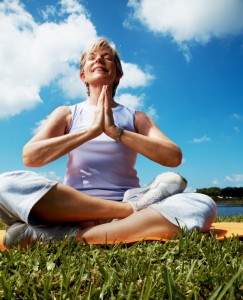Evade Boomeritis: Exercise, Exercise, Exercise | by

Snap, crackle, pop. It’s no longer just the sound of a breakfast cereal. Increasingly, it’s the rumble from baby boomers’ joints and ligaments tearing, and bones fracturing. Sedentary during the week, they play sports on weekends with the zeal of maniacal Olympic athletes. And, come Monday, they’re in a heap of hurt.
That’s bad for them, good for orthopedic surgeons and sports medicine specialists. “I think the numbers are going up. When you engage in binge athletics, you’re asking your body to respond to stress it doesn’t normally see, and you’re more at risk for injury,” says Dr. John Xenos, who specializes in joint replacement and reconstructive surgery at Colorado Orthopaedics in Lone Tree.
Nearly 60,000 people in the United States ages 45 to 64 hobbled into hospital emergency rooms in 2009 because of injuries suffered while exercising or using exercise equipment, the U.S. Products Safety Commission estimates. Many more visited doctors’ offices and clinics. Middle-aged adults accounted for 488 million days of restricted work in 2002 due to maladies from athletic activity, according to the Bureau of Labor Statistics.
The phenomenon is sometimes dubbed “boomeritis” and it bedevils men and women alike. With fitness buffs who go skiing in winter and mountain biking and running the rest of the year, Colorado is hardly immune to this “weekend warrior” syndrome.
The conundrum for boomers is this: They’re losing muscle and bone mass and developing aches in their joints. Unlike when they were younger, exercising and playing sports now leaves them feeling like they’ve been slammed by an NFL linebacker. Yet the American Academy of Orthopaedic Surgeons says that regular exercise slows the loss of muscle mass, strengthens bones and reduces joint and muscle pain as well as improving mobility and balance.
What To Do?
For starters, make time to exercise during the week. Cross training that includes cardio work, strength training and flexibility exercises can reduce muscle imbalances that can lead to injuries, says Dr. Yani Zinis, who specializes in sports medicine and rehabilitation at Orthopedic Associates in Denver. He suggests 30 minutes, three to five days a week. Doing this will also benefit your overall health. Cross training should include developing core muscle strength – think Pilates – because this maintains or improves one’s balance, Xenos says. “Everything you do, your balance has some impact,” he adds.
Denver-area physicians treat the gamut of boomer sports injuries. Zinis says male patients in his practice are more prone to back pain from sports, while women are plagued most by cranky knees. He also treats a lot of rotator cuff injuries incurred from repeated motions as in throwing or hitting a tennis ball. “I see more injuries from practicing than actually playing a round of golf,” he notes.
For John Woodward, section chair of orthopedics at Swedish Medical Center in Englewood, it’s fractured shin bones and collar bones, often a result of patients’ falls from bikes and skis.
When the weekend rolls around and you hit the slopes or the courts, many experts recommend a warm-up and stretch beforehand. “You get stiff as you get older,” Woodward says. “That’s why stretching is important.”
Dr. Steven Atkins, a doctor of podiatric medicine at Orthopaedic (cq) Physicians of Colorado in Englewood, recommends also stretching afterward, to the point of resistance and holding the position briefly. “You never should force a tendon to stretch,” he advises. “It shouldn’t hurt.” Warm-up stretches should include the Achilles tendon, hamstring and quadriceps muscles, as well as the upper body if you play a sport such as tennis.
Using proper form can reduce the risk of injury, as can the use of safety gear. That means, for example, wearing a helmet if you cycle and adjusting ski bindings periodically if your weight fluctuates, Woodward says. Zinis urges weekend athletes to get advice from qualified experts on the right techniques to follow in their sport.
Runners and power walkers also need to be sure they buy well-made athletic shoes, says Atkins, who treats a lot of people with plantar fasciitis, (cq) a painful inflammation at the heel. Shoes should be replaced every 400 to 600 miles, regardless of their appearance, he adds. Moisture can damage shoes, as can heat, by drying up cushioning.
“Baby boomers … don’t want to get old,” Atkins says. “We can delay it with exercise and nutrition.” But, he adds, “You’ve got to be realistic.”
Zinis, who has worked with professional and Olympic sports teams, says boomers would do well to remember that most professional jocks’ playing days end well before middle age. “I think people need to know their limits,” he says. “They can work toward realistic goals. Pain is unavoidable, but suffering is optional. The more you do something, the less those aches and pains are going to occur.”
Just don’t do that something with the same carefree abandon as when you were younger.
Tags: back, binge athletics, boomeritis, Colorado Orthopaedics, Dr. John Xenos, Dr. Yani Zinis, hip, John Woodward MD, joint replacement and reconstructive surgery, knees, lone tree, pilates, risk of injury, rotator cuff, Sky Ridge Mediacl Center, stretching, Swedish Medical Center, weekend warrior
Leave a Comment
Please be respectful while leaving comments. All comments are subject to removal by the moderator.


